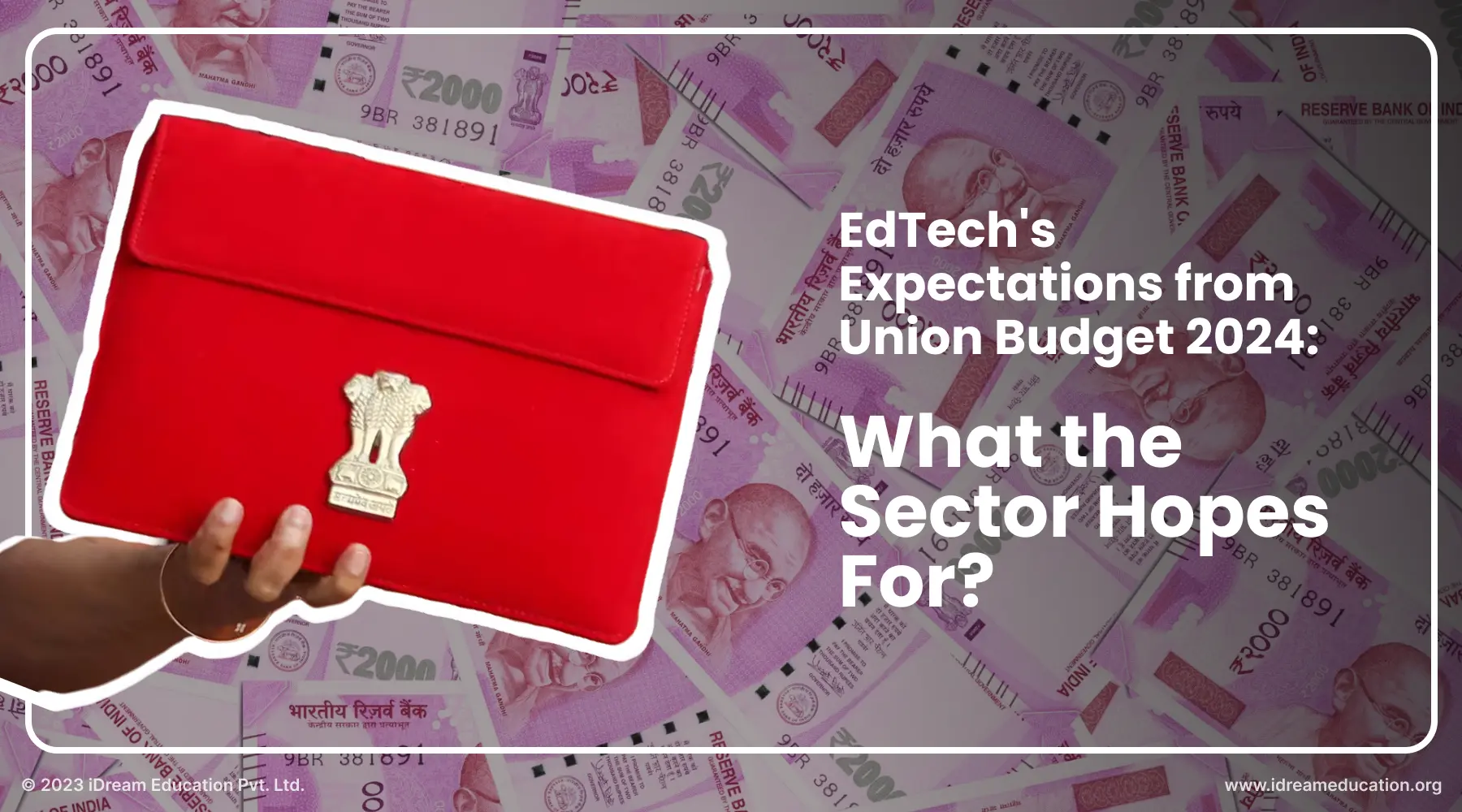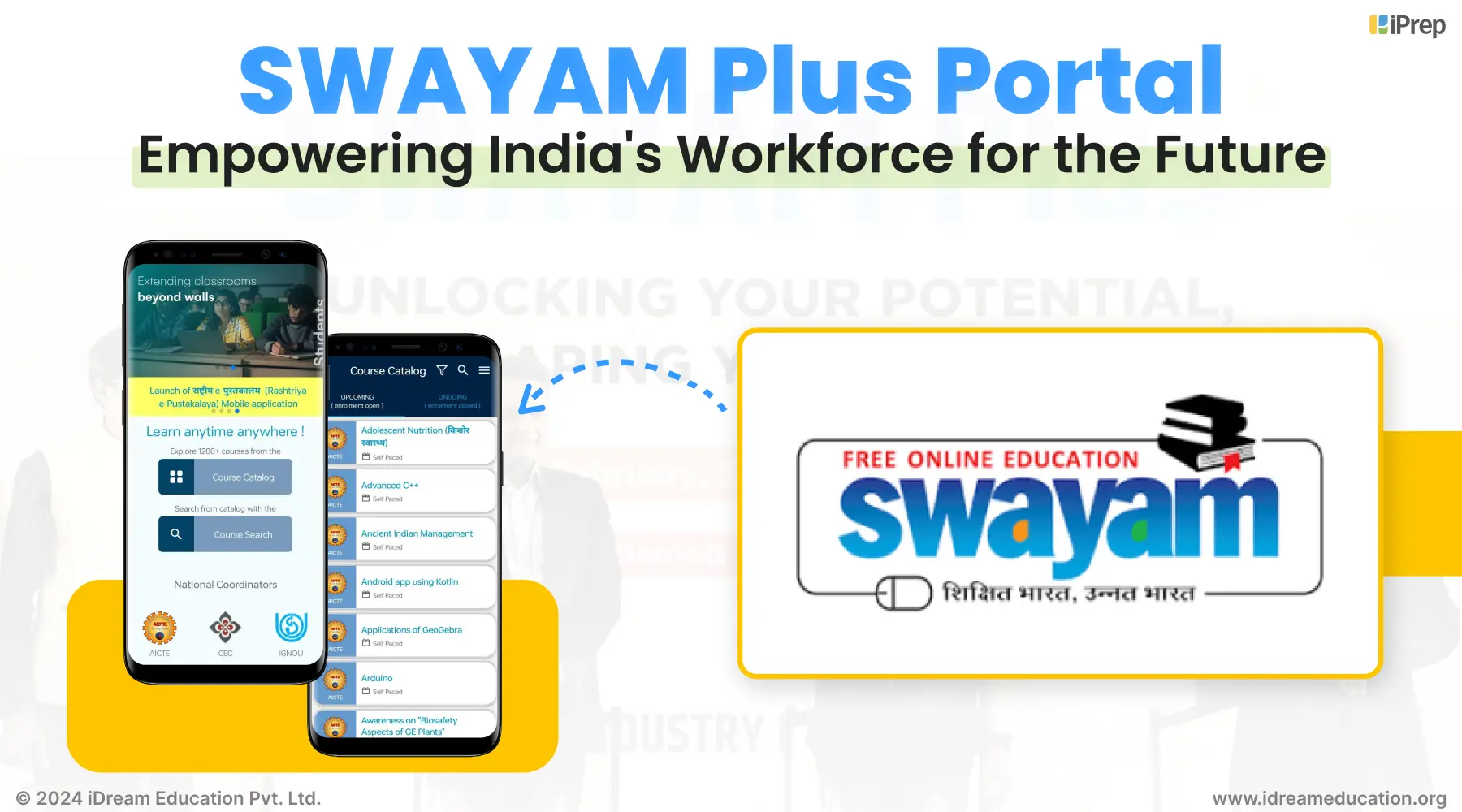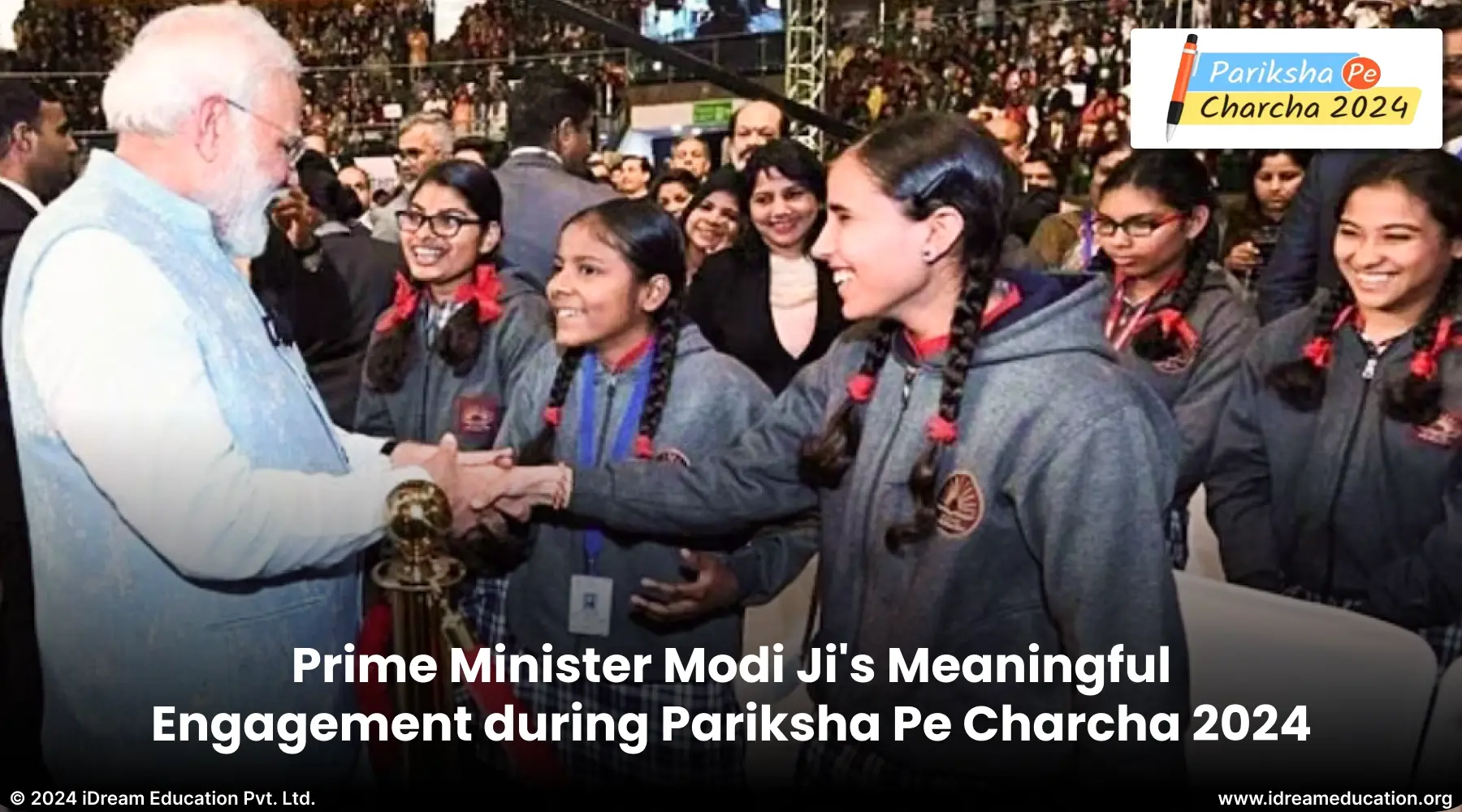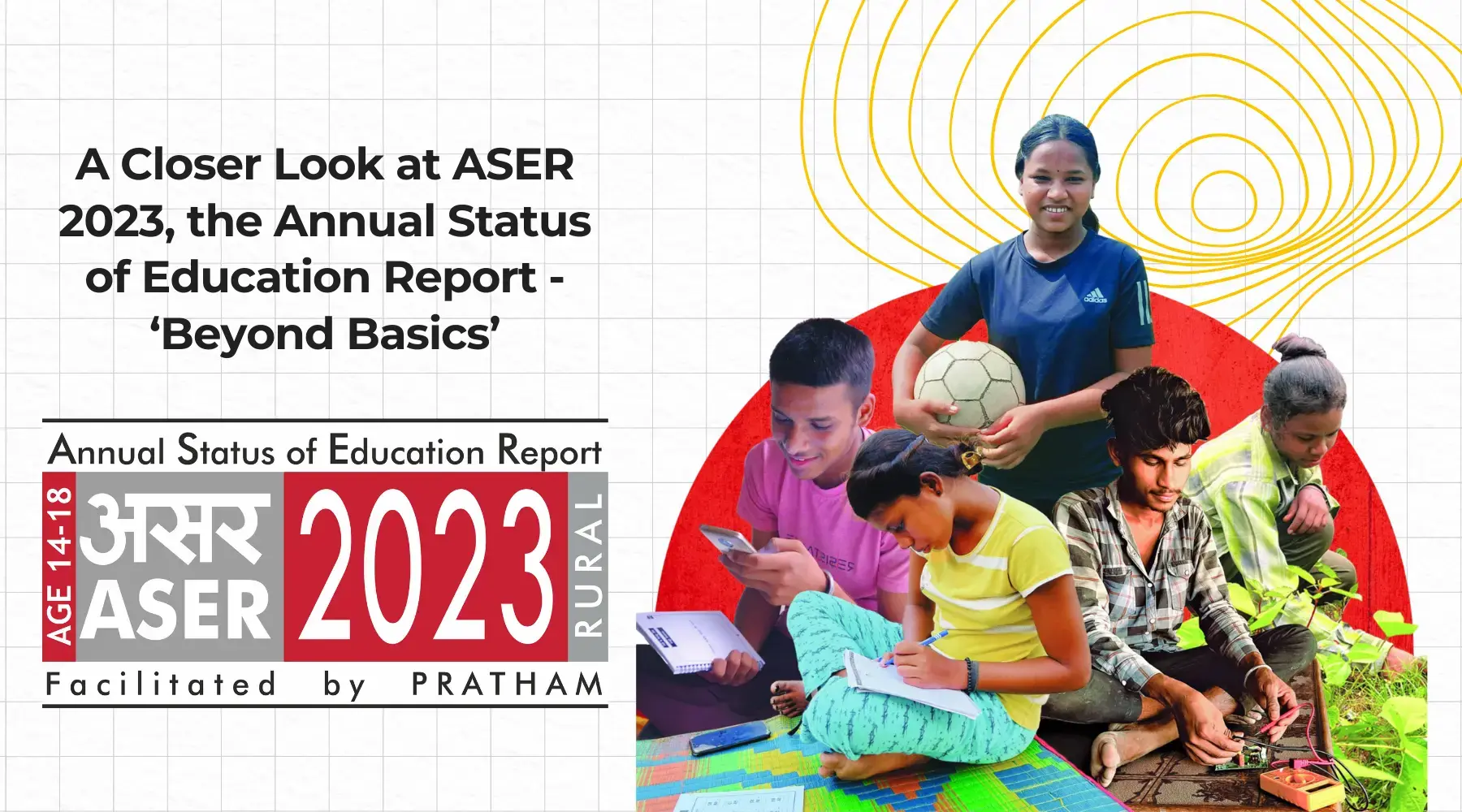PM SHRI Yojana (Pradhan Mantri Schools For Rising India) – A Complete Guide
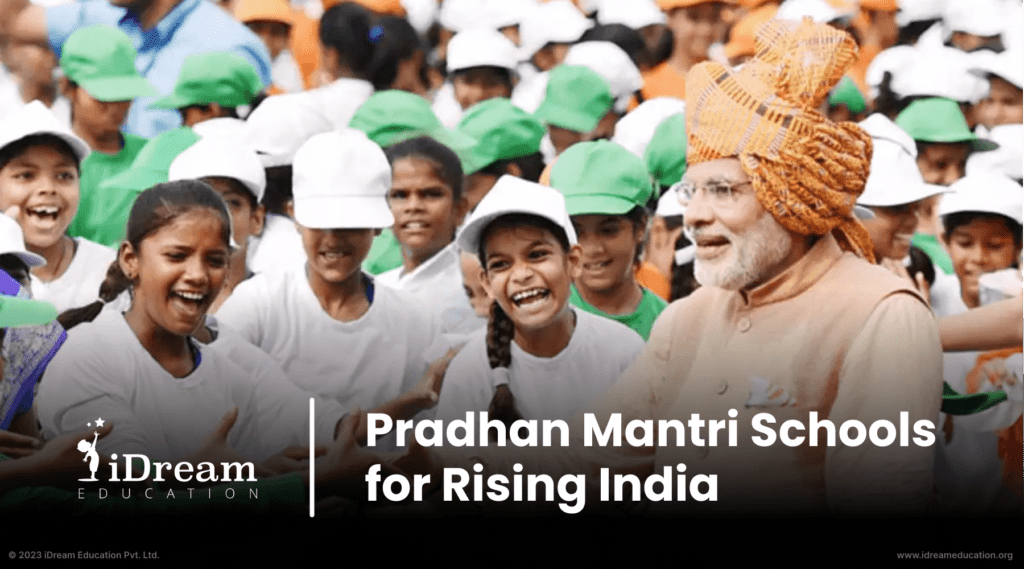
Welcome to our comprehensive guide on PM SHRI Yojana (Pradhan Mantri Schools for Rising India). Here we’ll dive into the transformative objectives, curricular plans, and innovative approaches that are aiming to reshape the educational landscape of our nation.
Over the last few years, there has been a sharp focus on fast-tracking quality education. All that with a particular focus on school students and achieving UN Sustainable Development Goals (SDGs) by the Government, under the larger Government objectives. To this end, clear objectives have been laid out by the Ministry of Human Resource Development under Samagra Shiksha with the larger vision captured in the National Education Policy (NEP) 2020.
However, India has a large population that is fast growing. Also, it is one of the youngest countries in the World (UNFPA). With previous learning gaps in Government & Rural School students’ learning levels (visible in the National Assessment Report 2021 and Annual Status of Education Report 2022), the impact of the pandemic and the rapidly expanding young population, and around 69.02% (61.62% in 2018) of students enrolled in Government and Rural Schools (as per Annual Status of Education Report 2022), it is imperative to take quick, scaleable and significant measures.
PM SHRI – Pradhan Mantri Schools For Rising India, is a welcome initiative by the Government. The name itself indicates the high priority given by the Government to transform school learning in India. Let’s now understand What PM SHRI Yojna is, in Detail.
What is PM SHRI Yojana?
PM SHRI (Schools Of Rising India) Schools in India are a new initiative aiming for transforming the education system in the country. The schools are inspired by the vision of the Honorable Prime Minister of India, Shri Narendra Modi. He has emphasized the need to provide quality education to every child in the country.
The PM SHRI Yojana is planning to cover around 14500 schools. The state-wise list of schools that are already selected can be found here- https://dsel.education.gov.in/pmshri-schools-list
The PM SHRI Schools are planning to follow a unique model that combines the best practices from around the world with indigenous practices specific to India. The schools focus on providing holistic development to their students. Altogether with an emphasis on academic excellence, life skills, and character formation.
One of the key objectives of the PM SHRI Yojana is to promote digital learning in schools. And there are several ways by which digital learning can improve the quality of education in India. For example, digital learning can provide students with access to a wider range of learning resources. It can personalize learning, and create more engaging and interactive learning experiences.
Let us now have a look at the list of objectives of the PM SHRI Yojana
PM SHRI Yojana Objectives
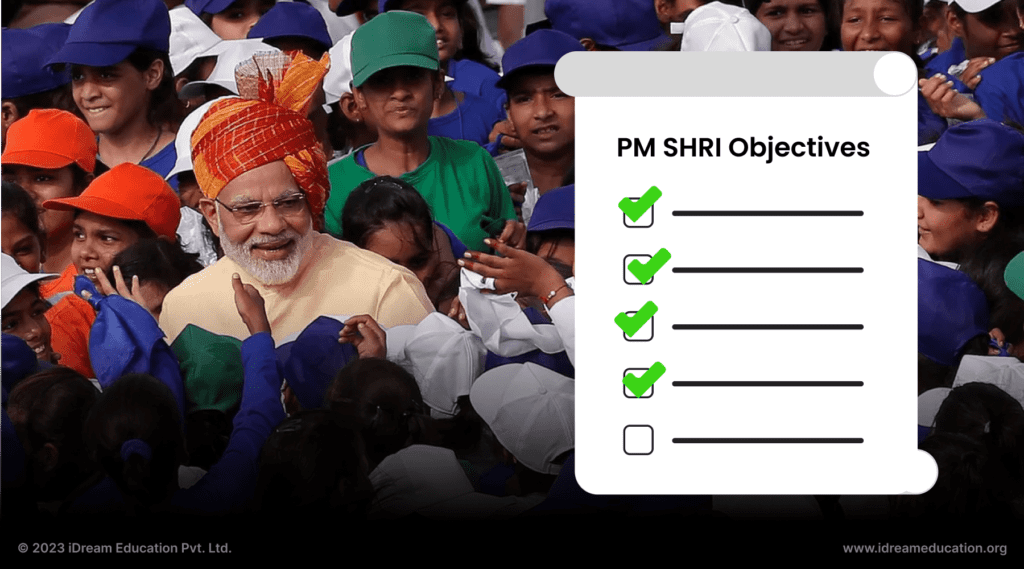
The overall objectives of the PM SHRI Schools are as follows-
- Featuring Exemplary NEP 2020 Schools: Leading the Way
- Developing welcoming and Engaging Learning Environments
- Leadership for Inclusive, Joyful, and Equitable Education
- Developing Contributing and Active Citizens
- A Holistic Approach to 21st Century Skills
- Pedagogy that is experiential and learner-centered
- Competencies and Real-World Application Evaluation
- Systematic Evaluation and Utilisation of Resources
- Integration of Education and Employability
- Green Schools: Environmentally-Responsible and Sustainable
- Community Involvement to Improve Learning
- Restauration of Dignity and Increasing Social Cohesion
- Opportunities for Universal Participation and Catch-Up
- Facilitating Quality and Equitable Education
- Providing Direction for Neighbourhood Schools
- Conforming to the requirements of the Fourth Industrial Revolution
- Visits to Exemplary Schools to Encourage Adoption and Growth
The PM SHRI Schools have been designed to be inclusive. It will be catering to students from diverse backgrounds and providing equal opportunities for all. The schools are planned to be equipped with state-of-the-art infrastructure and facilities, including smart classrooms, laboratories, libraries, playgrounds, and more. But, what exactly will be the curriculum that these schools will follow? Let’s deeply understand that before we go further into understanding the PM SHRI Yojana.
PM SHRI Schools’ Curriculum
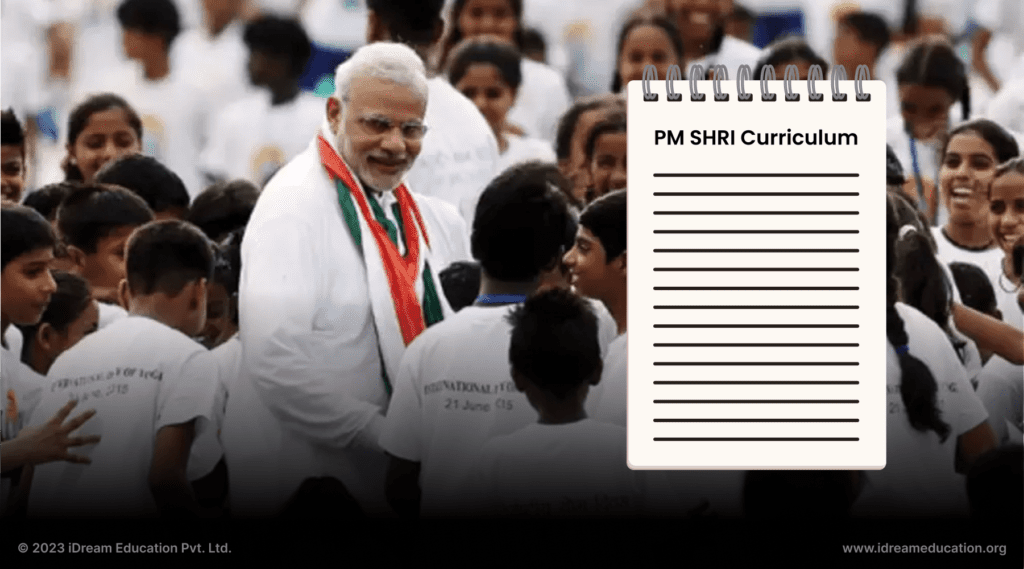
The curriculum for schools under PM SHRI Yojana will be based on the National Education Policy (NEP) 2020. The NEP emphasizes holistic education that develops the child’s overall potential, rather than just focusing on academic achievement. It is designed to meet the needs of the 21st-century learner, with a strong emphasis on STEM (science, technology, engineering, and mathematics) subjects.
The schools also focus on developing skills like critical thinking, communication, collaboration, and creativity, which are essential for success in the modern world. The curriculum will therefore be broad and interdisciplinary, covering a wide range of subjects, including:
- Languages (Hindi, English, and one regional language)
- Mathematics
- Science
- Social Studies
- Arts
- Physical Education
- Health and well-being
- Life skills
The curriculum will also be designed to be flexible and adaptable. It can be customized to the needs of the individual student and the local community. For example, schools may choose to focus on particular areas of study, such as environmental sustainability or entrepreneurship.
In addition to the academic curriculum, PM SHRI schools will also offer a variety of co-curricular activities, such as sports, arts, and clubs. These activities will help to develop the child’s creativity, problem-solving skills, and teamwork abilities.
The overall goal of the PM SHRI curriculum is to prepare students to be engaged, productive, and contributing citizens in a rapidly changing world. The curriculum will help students to develop the knowledge, skills, and values they need to succeed in school, work, and life.
Here are some additional details about the curriculum of Schools Under The PM SHRI Yojana
- The curriculum will be age-appropriate and progressive, with each grade level building on the knowledge and skills learned in previous grades.
- The curriculum will be aligned with the NEP’s focus on interdisciplinary learning. The subjects will be taught in a way that emphasizes their connections to each other.
- The curriculum will be learner-centered, with students being actively engaged in their learning.
- The curriculum will be assessment-driven, with students being regularly assessed to track their progress and identify areas where they need additional support.
- The PM SHRI curriculum is still under development. It will be a comprehensive and innovative approach to education that will prepare students for the challenges of the 21st century.
The curriculum of the PM SHRI Schools is designed to meet the needs of the 21st-century learner, with a strong emphasis on STEM (science, technology, engineering, and mathematics) subjects. The schools also focus on developing skills like critical thinking, communication, collaboration, and creativity, which are essential for success in the modern world.
The PM SHRI Schools have been designed to be inclusive, catering to students from diverse backgrounds and providing equal opportunities for all. The schools are equipped with state-of-the-art infrastructure and facilities, including smart classrooms, laboratories, libraries, playgrounds, and more.
What we strongly believe is that to satisfy the specific requirements of these schools, and to help these schools overcome all the obstacles that they are expected to face, a comprehensive set of Digital Learning Solutions is essential. It is only then possible for the entire vision behind this initiative to come out as achieved. So much so, that we believe without a good set of digital resources, the vision will not just be hard to achieve, but may also lack the ability to result in something prosperous.
Even a government initiative called the PM e-Vidya claims, digital education can fuel the spread of access to quality education. Therefore, we believe that the power of digital education can be the driving force for the effective implementation of PM SHRI schools.
There are also some obstacles that PM SHRI schools expect to face as they try to successfully implement the initiative. Let’s discuss them in detail.
Understanding The Obstacles Expected to be Faced By PM SHRI Yojana
The PM SHRI Yojana is expected to face a variety of obstacles, such as
- Diverse linguistic backgrounds
- Absenteeism
- Untrained staff
- Different learning abilities.
- & Infrastructural deficit
The objective of transforming thousands of schools into PM SHRI Schools is to address these obstacles and provide inclusive and equitable education for all students. Also, the PM SHRI Yojana is going to have a birds-eye view of the major challenges faced in the implementation of the New Education Policy in Schools Of Bharat.
So, what should be the way forward? What will be the best way forward for PM SHRI Yojana to efficiently overcome these obstacles?
Let us just share what we believe may work based on our experience of facilitating universal access to learning and growth for the last-mile learners of Bharat. We’ll start by discussing how comprehensive digital learning solutions can be a go-to solution for the effective implementation of PM SHRI schools.
How Digital Learning Solutions May Help
The PM Shri Schools scheme aims to provide high-quality education to students across India. Comprehensive digital learning solutions can help to achieve this goal in several ways. First, they can provide access to a wide range of educational resources, including textbooks, videos, and interactive exercises. This can help to ensure that all students have the opportunity to learn at their own pace and in a way that suits their learning style.
Second, digital learning solutions can make it easier for teachers to deliver effective instruction. For example, they can provide teachers with access to lesson plans, assessments, and other resources that can help them to plan and deliver engaging and effective lessons.
But how can these solutions be implemented in PM SHRI schools?
One way to implement digital learning in schools is to use smart classrooms which is also a part of the plan of PM SHRI schools. Smart classrooms are equipped with interactive whiteboards, IFPs, or even smart TVs that can be used to display digital content. This allows teachers to create more engaging and interactive lessons and works as a significant supplement to the teaching outcomes.
Another way to implement digital learning in schools is to use tablet-based digital libraries. Tablet-based digital libraries provide students with access to a wide range of digital content, including textbooks, e-books, articles, and videos. This allows students to learn at their own pace and to access information from anywhere. These libraries, if loaded with relevant content, can fit both the library and laboratory needs of the PM SHRI schools.
The PM SHRI Yojana provides an opportunity to accelerate the adoption of digital learning in India. By using smart classrooms and tablet-based digital libraries, schools can create more engaging and interactive learning experiences for students. This will help to improve the quality of education in India and prepare students for the jobs of the future.
How Smart Class For PM SHRI Schools Can Help?
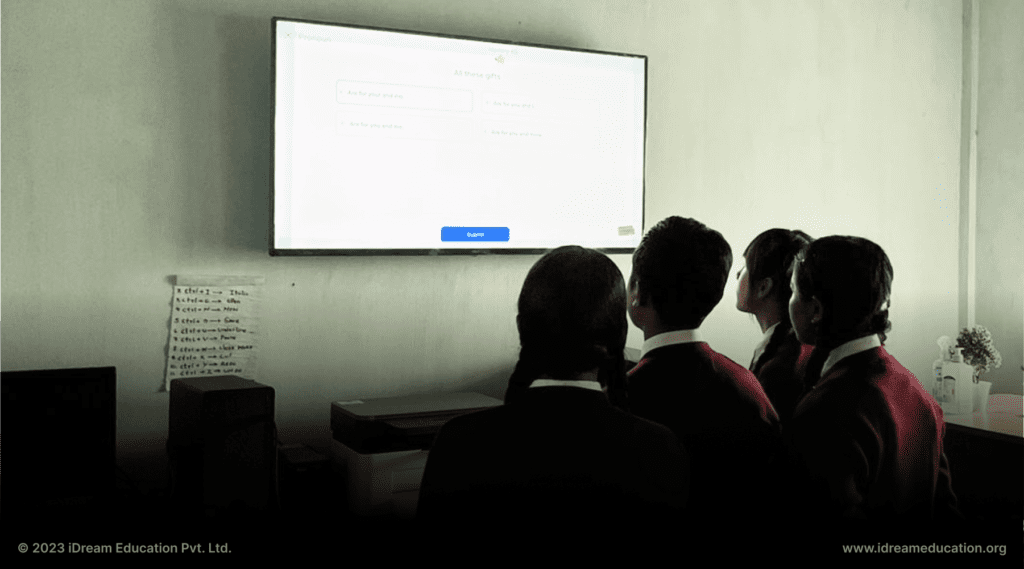
Smart classes are equipped with a variety of technologies that can be used to enhance the teaching and learning experience. These technologies include interactive whiteboards, IFPs, and even smart TVs. These devices can be used to display digital content, such as videos, class notes, syllabus-aligned e-books, additional books, and interactive lessons. They can also be used to create interactive learning activities, such as in-class practice with feedback and assessments.
Smart classes for PM SHRI schools can help to improve the learning experience in several ways. First, they can make lessons more engaging and interactive. With added visuals and real-life connected visuals, students can actually find it easier with smart classes to understand various complex concepts that are taught in classes.
Secondly, these smart class set-ups can supplement the teaching process in and out. With high-quality resources that make it easy to deliver lessons, some of the new-age smart class setups also come with usage tracking systems that help teachers analyze what they’ve taught together with what the students have understood and ultimately plan and manage their classes better.
At last, these smart class setups can make it easier for the governing bodies to regularly track the enhanced value that the PM SHRI Yojana may bring to the schools as the usage data being recorded can also be synchronized or integrated into any MIS or Command Control Center for an ongoing focus on data-driven learning outcomes.
Also, the enhanced levels of engagement this will create in students are set to help schools overcome the obstacle of Absenteeism. Further way these solutions are easy-to-use, even the untrained staff can use them without much difficulty. Solutions like these can even be a good source to train the staff of schools.
How Tablet-Based Digital Libraries Can Help?
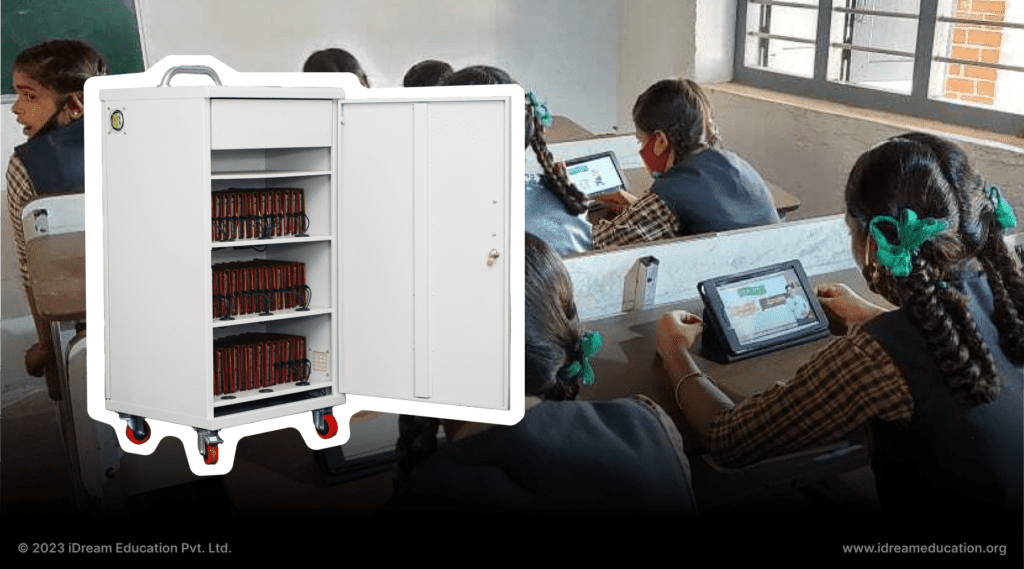
Tablet-based digital libraries provide students with access to a wide range of digital content. This content can include syllabus-aligned e-books, additional books, interactive lessons, class notes, and videos. It can also include interactive learning activities, such as practice with instant feedback and assessments.
Tablet-based digital libraries for PM SHRI schools can help to improve the learning experience in several ways. These types of libraries can replace the complex hardware setup of computers with tablets/notebooks and a charging rack and can offer comprehensive digital learning content for students. The best part is that these can include ICT with student-wise data for learning outcomes.
These tablet-based digital libraries can also personalize the aspect of learning. This is because students can choose the content that they want to read or watch and they can read/watch it at their own pace. At the same time, it will indirectly but efficiently create an environment of digital literacy among the students of government schools. That in itself will add a lot more value, especially for the schools located in under-served or last-mile regions.
At last, these digital library setups too can make it easier for the governing bodies to regularly track the enhanced value that the PM SHRI Yojana may bring to the schools as the usage data being recorded on the tablets present in these digital libraries can also be synchronized or integrated to any MIS or Command Control Center for an ongoing focus on data-driven learning outcomes
The personalized approach to learning these tablets will bring to the students can help the schools with overcoming the obstacle of different learning abilities. Further, as these tablet-based digital libraries require close to no additional infrastructure, the obstacle of infrastructure deficit can also be overcome. We have been able to implement these Digital Libraries even in Tin Shed Schools without any issues.
At last, there are similar solutions present in the market that come with learning content in multiple languages, which can help these schools overcome the obstacle of diverse linguistic backgrounds.
Conclusion
The PM SHRI Yojana is a valuable opportunity to accelerate the adoption of digital learning in India. By using smart classrooms and tablet-based digital libraries, schools can create more engaging and interactive learning experiences for students.
This will help to improve the quality of education in India and prepare students for the jobs of the future. Also, this will help the rural government schools to overcome all the challenges and obstacles that they face.


